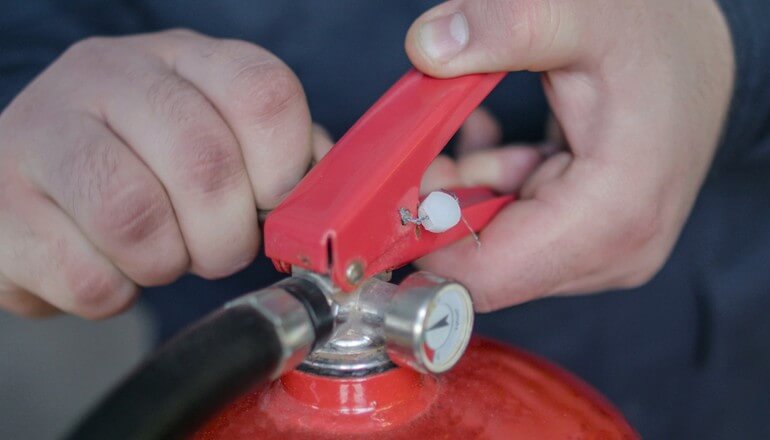Fire Extinguisher Obligations for UK Businesses: A Comprehensive Overview
Maintaining safety in the workplace is essential for all UK businesses, and one of the key elements is having proper fire safety equipment in place. Fire extinguishers are critical tools that help manage small fires before they become major incidents. But what are the specific requirements for fire extinguishers in UK commercial properties? This article explains everything you need to know to ensure your business complies with fire safety laws and keeps everyone safe.
Why Are Fire Extinguishers Essential in Commercial Settings?
Fire extinguishers act as the first line of defense against fires, enabling staff and visitors to tackle flames early. Correctly positioned extinguishers can significantly reduce damage and help protect lives during an emergency.
Fire Extinguisher Requirements Under UK Law
The Legal Framework
In England and Wales, the Regulatory Reform (Fire Safety) Order 2005 (RRFSO) mandates that all workplaces perform a fire risk assessment and install adequate fire safety measures, which includes suitable fire extinguishers.
Scotland’s fire safety rules are governed by the Fire (Scotland) Act 2005 and related regulations, while Northern Ireland follows the Fire and Rescue Services (Northern Ireland) Order 2006.
Conducting a Fire Risk Assessment
A fire risk assessment helps determine the type and number of extinguishers your premises require. Factors influencing this include:
- The size and layout of your building
- The activities carried out onsite
- Specific hazards like flammable substances or electrical equipment
Types of Fire Extinguishers Commonly Used
There’s no fixed number of extinguishers mandated by law; rather, businesses must provide sufficient devices tailored to their risks. Common categories include:
- Water Extinguishers – Suitable for fires involving wood, paper, or textiles (Class A)
- Carbon Dioxide (CO2) Extinguishers – Ideal for electrical fires and flammable liquids (Class B and electrical)
- Foam Extinguishers – For fires involving flammable liquids and solids (Class A and B)
- Dry Powder Extinguishers – Multi-purpose for solids, liquids, gases, and electrical fires (Class A, B, C, electrical)
- Wet Chemical Extinguishers – Specifically designed for kitchen fires caused by oils and fats (Class F)
Placement and Visibility
Extinguishers should be clearly visible, easily reachable, and located near escape routes or areas with higher fire risk. Typically, they are installed between 90cm and 120cm from the floor to ensure accessibility.
Inspection and Upkeep
To meet legal obligations, fire extinguishers must undergo:
- Routine visual checks: Monthly inspections to confirm the extinguisher is intact and properly positioned
- Annual professional servicing: A certified technician must perform a full inspection each year, checking pressure, seals, and mechanical condition
- Record keeping: Detailed logs of inspections and maintenance activities must be maintained onsite
Risks of Failing to Comply
Neglecting fire extinguisher requirements can lead to:
- Penalties or enforcement actions by fire authorities
- Increased risk of injury or extensive property damage
- Potential legal consequences if negligence contributes to an incident
Conclusion: Prioritize Fire Safety in Your Business
For businesses across the UK, ensuring the correct fire extinguishers are installed and regularly maintained is both a legal duty and a critical safety measure. Regular fire risk assessments, selecting the right types of extinguishers, and adhering to maintenance schedules will keep your premises safe and compliant.
If you need guidance on selecting, positioning, or servicing fire extinguishers, it’s best to consult a qualified fire safety professional to tailor solutions to your business’s specific needs.




